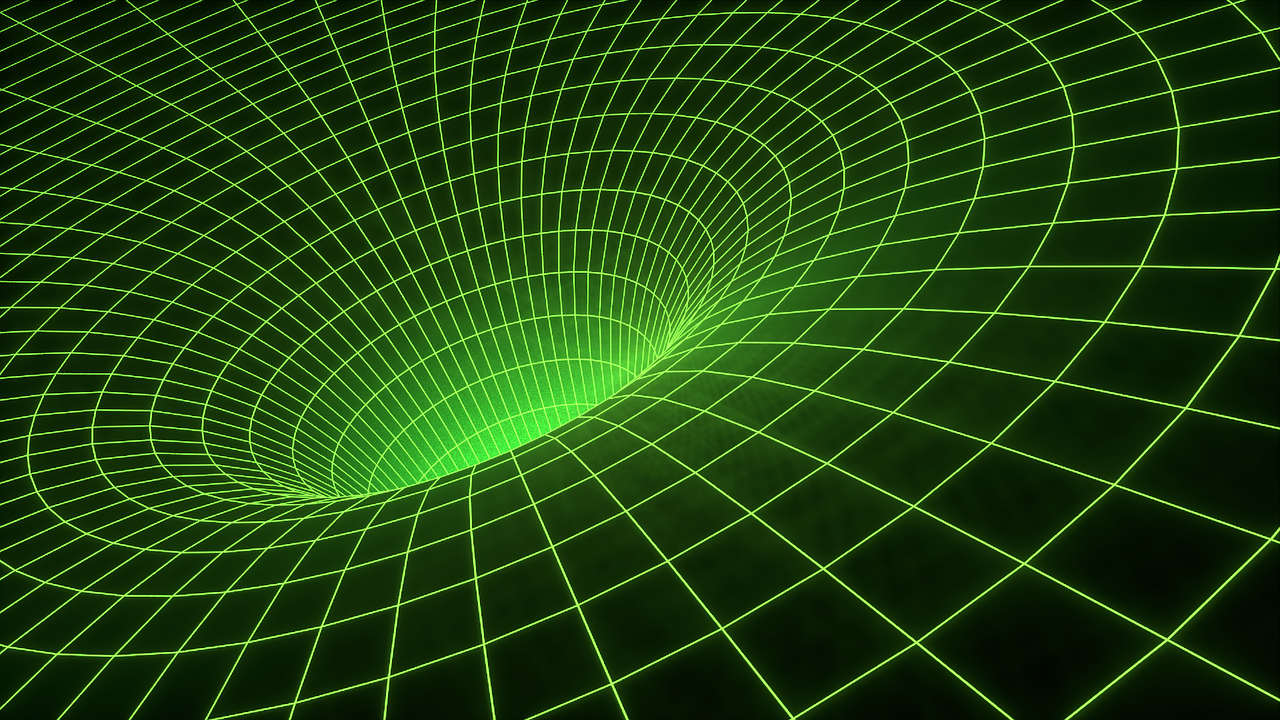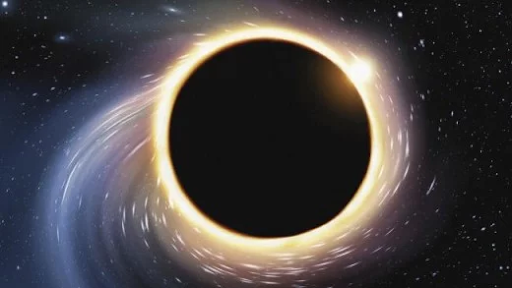
Prompt Images
Look, dear reader, as I wrote about on Friday, we have just two days to prepare for what could be a truly historic event in science. We may see the first ever photo of a black hole. In anticipation of the big day, let’s brush up on some facts about black holes because the more you know, the more you understand how mind-blowing black holes are, the better you will be able to appreciate how absolutely wild it is that we are in a position to observe one.
What Is A Black Hole?
To understand what a black hole is, let’s first start with a regular ol’ planet like Earth and work our way through space. We know that Earth has gravity. We know this gravity keeps things stuck here on Earth. You can’t just jump up and expect to float over to Mars. Now, it is possible to escape Earth’s gravity if you have a ton of energy and get going really, really fast. That’s what rockets do.
Same goes for stars, except they are way, way bigger than planets. As a result, their gravity is much, much stronger. If you launched a rocket from the surface of a star, you’d need to go a lot faster to escape its gravitational pull.
The overall point of these examples is this: The stronger the gravitational field, the faster something has to move in order to escape that gravitational field. You can think of the gravitational field as a river with a current, and as the current increases towards the center of the planet/star/black hole, you must swim faster to keep from being swept up along with it.
Imagine we could crank up the gravitational field of a star as high as we wanted.
Well, Einstein taught us that the speed of light is constant, and nothing can travel faster than the speed of light. This means that—at least in theory—we should be able to crank our gravitational field up to the point where nothing—not even light—can move fast enough to escape from the star’s gravitational field.
Einstein’s theory of gravity (general relativity) in fact tells us that it is possible to crank up gravity to the point where even light cannot move fast enough to escape. The catch is that such strong gravitational fields can only be created by objects that are much, much denser than ordinary stars.
In a normal star, gravity is constantly trying to pull everything inwardly.
Meanwhile, the atoms inside are undergoing nuclear fusion, a process that releases energy (including a lot of light) and generates an internal pressure that pushes back against the inward tug of gravity. But every star eventually burns through its fuel. At this point there’s not enough internal energy generated to push back against gravity, and the whole thing collapses under its own weight. If the star has enough mass it may eventually collapse into a black hole.
At the center of a black hole is something called the “singularity.”
A singular point in space (and time) where all the matter and energy left over in that dead star is now stored. The outer boundary of the black hole is called the event horizon—an invisible boundary separating space into a region around the singularity, where the gravitational field is so strong that you have to move faster than the speed of light to escape, and the rest of space outside of the event horizon.
Since it’s impossible to move faster than the speed of light, this means that nothing that has crossed the event horizon and into the interior of the black hole can ever escape.
How can we see the event horizon?
Because not even light can escape from the interior of a black hole, nothing from inside the black hole will ever been “seen” again—since, by definition, “seeing” requires light. But things just outside the horizon can be seen.
If you have a big gravitating body, it’s likely you will find other smaller gravitational bodies orbiting it.
Think planets around a star, or moons around a planet. In the case of black holes, you get gases orbiting just outside the event horizon. Those gases get heated by the immense gravitational energy imparted to them by the black hole. And when things get hotter, they light up—think of molten rock, fire, and stars themselves.
Thus it isn’t actually the black hole itself that you see, but a bright ring of hot gas that is orbiting the black hole, biding its time before it falls in.

Reminder: This is just an artistic rendering. We’re still waiting on the real deal.
Where is the black hole the EHT is looking for?
Astronomers believe that our galaxy, the Milky Way, has at its center a supermassive black hole known as Sagittarius A*. It has the supermassive qualifier because it’s estimated to have a mass equivalent to about 3 to 5 million times the mass of our own sun.
Sag A*, as the kids like to call it, is about 26,000 light years away (i.e., it would take light 26,000 years to get from Sag A* to Earth). Considering that the sun is about 8 light minutes away, it’s clear that we aren’t in any danger of getting swallowed up by Sag A* anytime soon.
What Happens When You Get Near a Black Hole?
It really depends on the size. Counterintuitively, the bigger the black hole, the less likely you will be to notice that you’ve crossed over the event horizon. But regardless of the size, at some point once you are within the event horizon you will never escape. And you will be inexorably drawn in towards the singularity. And get spaghettified long before you reach it.1
In short, should you ever find yourself with the option to enter a black hole, don’t.
On the other hand, if you ever have the opportunity to observe some other joker falling into a black hole, you are going to want to take it. The physics of how two different folks experience events when one of them crosses the event horizon is nothing short of mind-shattering.
Can you time travel through black holes?
In one sense, yes. Time passes differently for people who are close to a black hole because of the intense gravitational field it emits. If you take a trip near a black hole and then travel back home, you will have aged more slowly than folks who stayed home the whole time. This is a real (albeit insane) feature of black hole physics, and one of the things Interstellar portrayed pretty well.

But you can’t reverse the process. You can go into other people’s future, but you can’t go into anyone’s past. So it’s a gimmicky kind of time travel.
Do black holes evaporate?
Yes, apparently. Physicists believe that black holes have a temperature, and like all things with temperatures, they radiate heat. Since heat is a kind of energy, this means that they lose energy over time. And since mass and energy are equivalent, by Einstein’s famous equation (E=mc2), this means that they lose mass over time. Finally, because the size of a black hole is related to its mass, this means they actually shrink over time.
Of course, black holes can also swallow things, so the net effect on their waistlines really depends on a more careful calories-in vs. calories-out calculation.
Do all scientists believe in black holes?
Almost all, yes. But there are some holdouts—accomplished physicists even. I’ll talk about some alternative ideas for black-hole-like objects in the final part of this series, tomorrow.
Footnotes:
1 From Wikipedia: In astrophysics, spaghettification (sometimes referred to as the noodle effect) is the vertical stretching and horizontal compression of objects into long thin shapes (rather like spaghetti) in a very strong non-homogeneous gravitational field.
